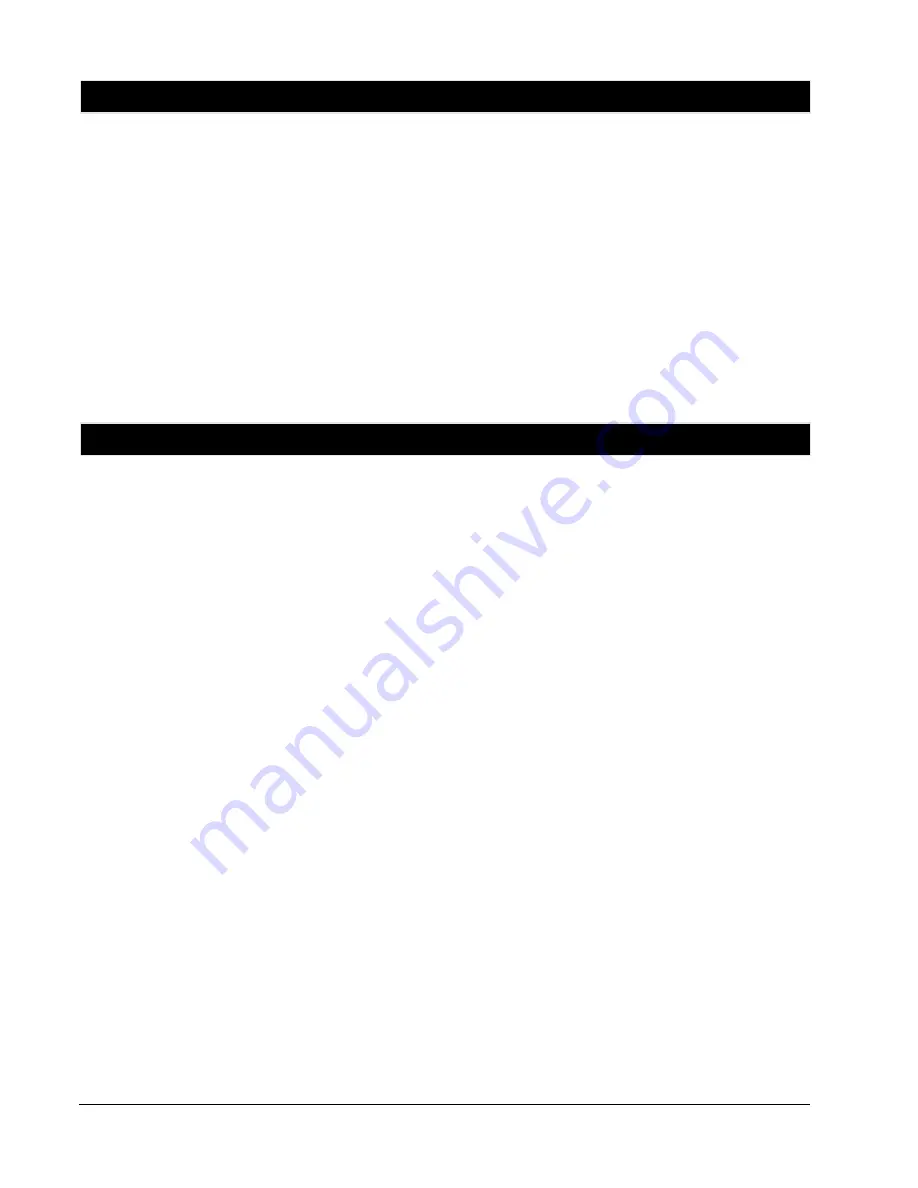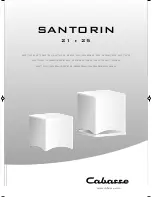
Velodyne Digital Drive User’s Manual Page 24
About Room Equalization
This section gives some background on room equalization. As a sub plays in a room, the reflections
of the sound waves off the walls create “standing waves,” that is, places in the room where certain
frequencies are louder and others are diminished. In addition to standing waves, every room will also
have locations where cancellations of the sound waves are like black holes that no amount of attenuation
can fill. Thus as a general rule it is better to “cut down” a peak of response rather than to “boost up” a
valley (i.e. possible black hole) of response.
In general, you are looking for a frequency response that is +/- 3dB at all frequencies (it is highly
doubtful that your ear can tell a response that is any better than this). The response will always roll off
at the low end (according to the settings of the subsonic filter), and there should be no dip or peak at
the crossover frequency with the satellites. While the goal is perfectly flat response, this may not be
possible in the higher frequencies of the subwoofer’s response due to peaks or valleys introduced by
the satellites.
Distortion in Loudspeakers
Nonlinear distortion is a problem that plagues all speakers. This particular type of distortion is a
common problem in subwoofers, which must move large amounts of air to produce adequate levels of
deep bass. Nonlinear distortion is defined as any form of distortion that moves energy from one
portion of the audio frequency spectrum to another. When a single tone is applied to a nonlinear
system, the result is harmonic distortion in which some of the energy leaves the system at multiples of
the original frequency. When multiple tones are applied, intermodulation tones are produced, usually
as simple combinations of the input frequencies. Generally, 3% distortion is considered a reasonable
amount for speakers. This means that 3% of the total energy leaving the speaker is at frequencies
other than the intended input signal.
Most subwoofers on the market today however, produce much more than 3% distortion at common
listening levels. Many models we have tested produce greater than 20% distortion at 20Hz when
driven to 100dB. This is a typical output level obtained in many systems, particularly home theater
systems. Even at 1 watt, many conventional units produce several percent distortion. Secondly, the
odd order, higher harmonics are much more offensive to the human ear than the closer 2nd harmonic.
An interesting result of this reduced distortion is that some of the bass, when played over an extremely
accurate subwoofer system, seems to actually be missing. The truth, however, is that the “missing”
bass was never there to begin with! Distortion products of conventional woofers actually add to the
bass spectrum making it appear louder than recorded. This is due to the additional and unwanted
harmonics (distortion) of the fundamental signal. While conventional subwoofers offer little to combat
distortion products, we at Velodyne have developed another way.
The Velodyne Digital Drive Servo-Control Solution
Velodyne Digital Drive subwoofers produce sound in the same manner as conventional loudspeakers:
a cone-shaped piston is forced to move by means of a linear motor. However, this is about the only
conventional part of the subwoofer.
We determined that conventional motors are unacceptable when called upon to produce the amount of
linear motion we desired. This inadequacy led us to design an improved motor structure by incorporating
two coils, operating out of phase in a push-pull configuration within two magnetic gaps and suspended







































